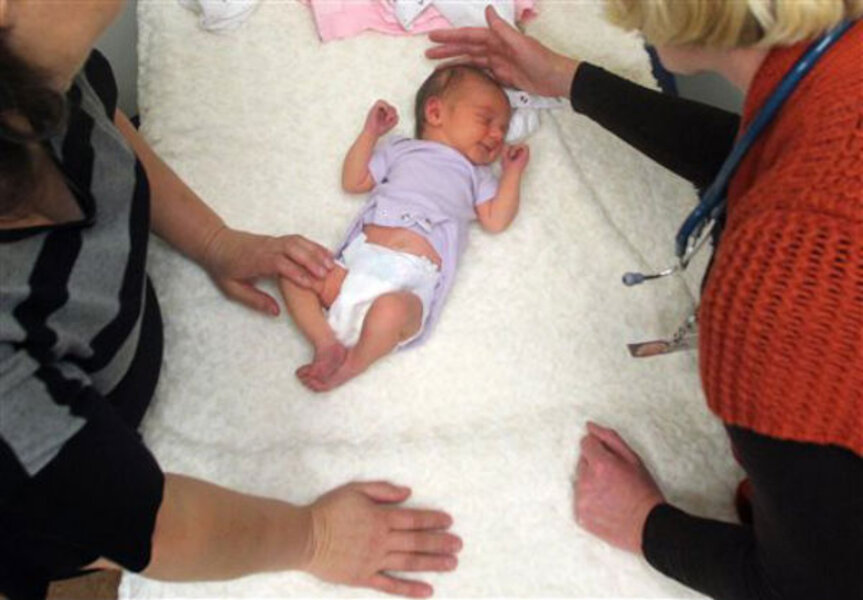US birthrate decline slowing?
Loading...
| Atlanta
After falling four years in a row, US births may finally be leveling off.
The number of babies born last year – a little shy of 4 million – is only a few hundred less than the number in 2011, according to a government report released today.
That suggests that lately, fewer couples may be scared away from having children because of the economy or other factors, some experts say. Among the signs of a possible turning point: The birthrate for women in their early 30s inched up for the first time since 2007.
"We may be on level course or potentially even see a rise" in birth trends in the near future, said Brady Hamilton, a statistician with the Centers for Disease Control and Prevention.
Some are a bit more pessimistic.
"The decline has slowed down, but it's still a decline," said Carol Hogue, an Emory University expert on birth trends.
Falling births is a relatively new phenomenon in the US Births were on the rise since the late 1990s and hit an all-time high of more than 4.3 million in 2007. The drop that followed was widely attributed to the nation's flagging economy. Experts believed that many women or couples who were out of work or had other money problems felt they couldn't afford to start or add to their family.
The economy officially was in a recession from December 2007 until June 2009. But well into 2011, polls showed most Americans remained gloomy, citing anemic hiring, a depressed housing market, and other factors.
The new CDC report is a first glimpse at 2012 birth certificate data from state health departments, but the numbers aren't expected to change much.
Rates rose 2 percent for moms ages 35 and older, and 1 percent for women in their early 40s. Rates in older moms have been rising slightly in recent years, despite the overall downward trend. Experts say that's because older women generally have better jobs or financial security, and are more sensitive to the ticking away of their biological clocks.
Birthrates for teen moms have been falling since 1991 and hit yet another historic low. The number of babies born to teens last year – about 305,000 – is less than half the peak of nearly 645,000 in 1970.
The teen birthrate has been cut in half since 1991, said Bill Albert of the National Campaign to Prevent Teen and Unplanned Pregnancy, who called it a "stunning turnaround."
Experts attribute that decline to a range of factors, including less sex and more use of contraception.
Another report highlight: About 33 percent of births last year were delivered through Cesarean section – a rate unchanged from the previous two years.
C-sections are sometimes medically necessary. But health officials believe many are done out of convenience or unwarranted caution, and in the 1980s set a goal of keeping the national rate at 15 percent.
The C-section rate had been rising steadily since 1996, until it dropped slightly in 2010.







